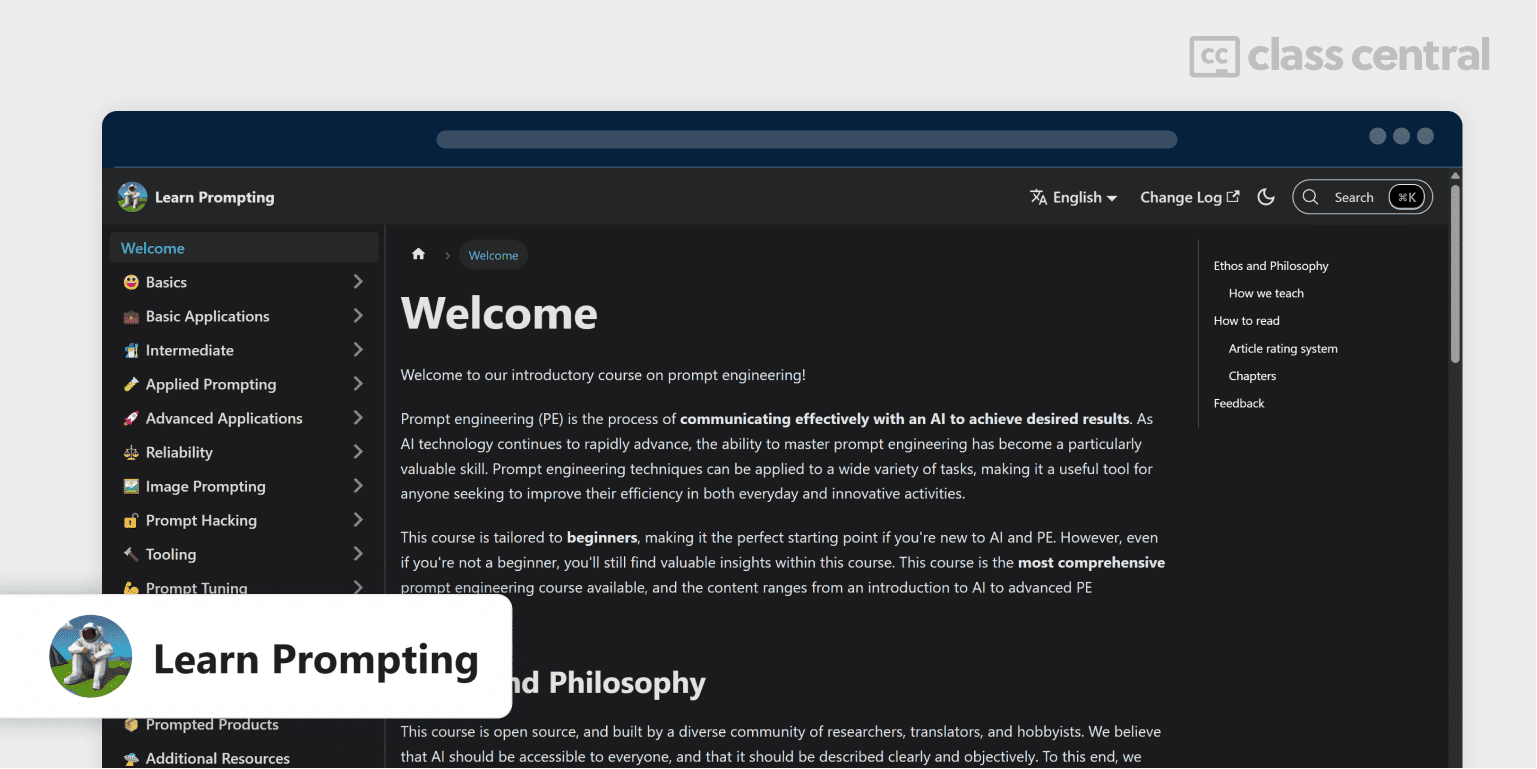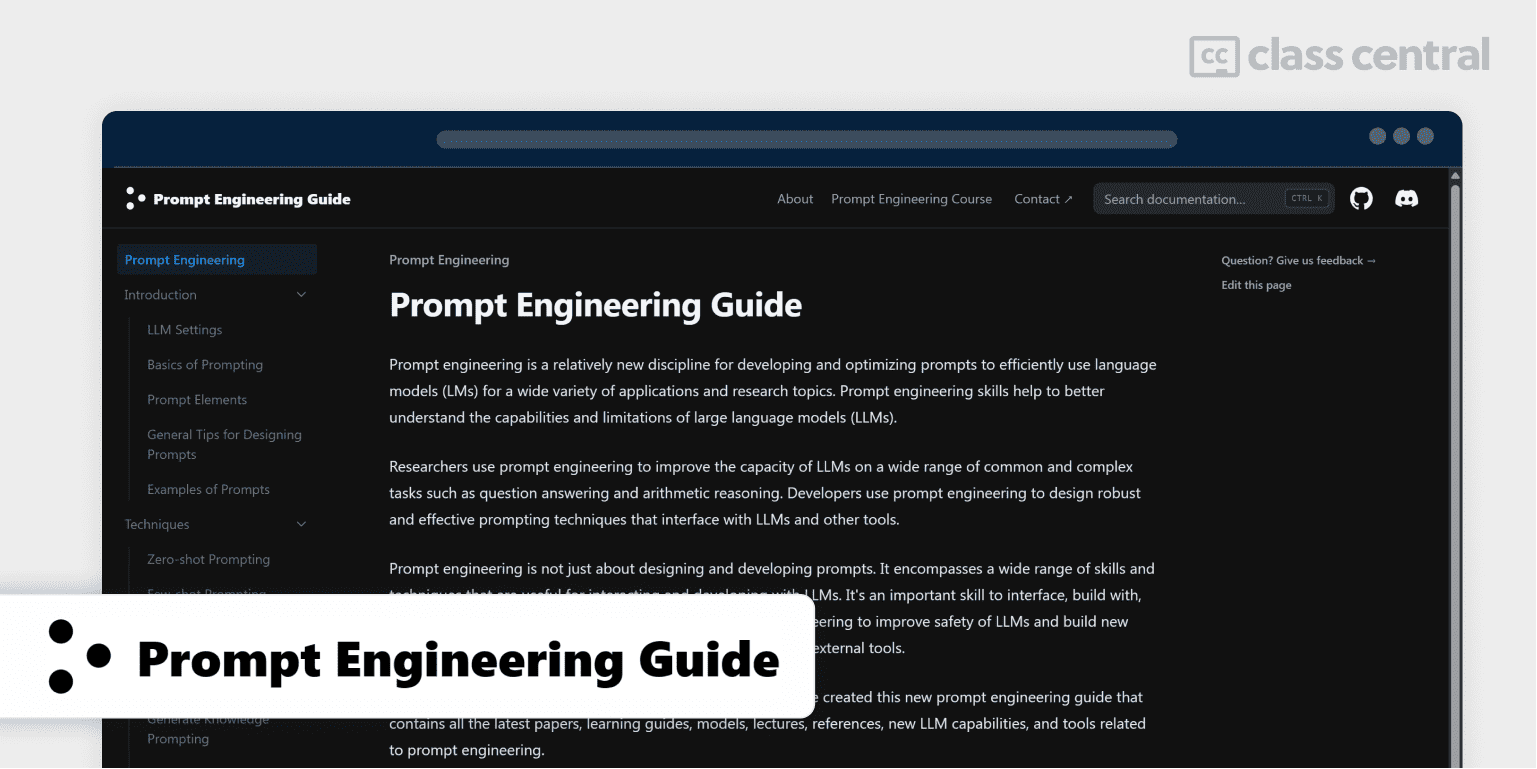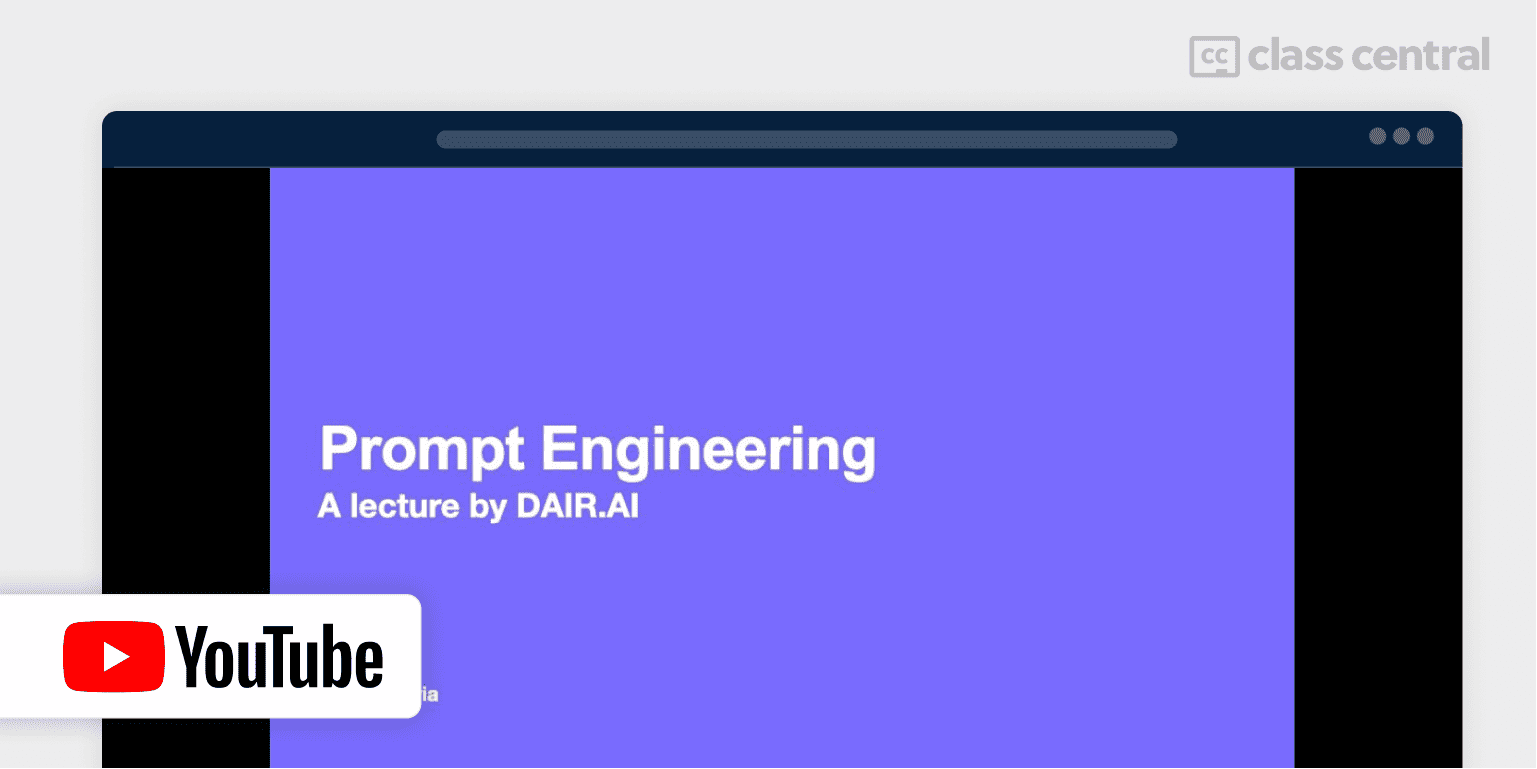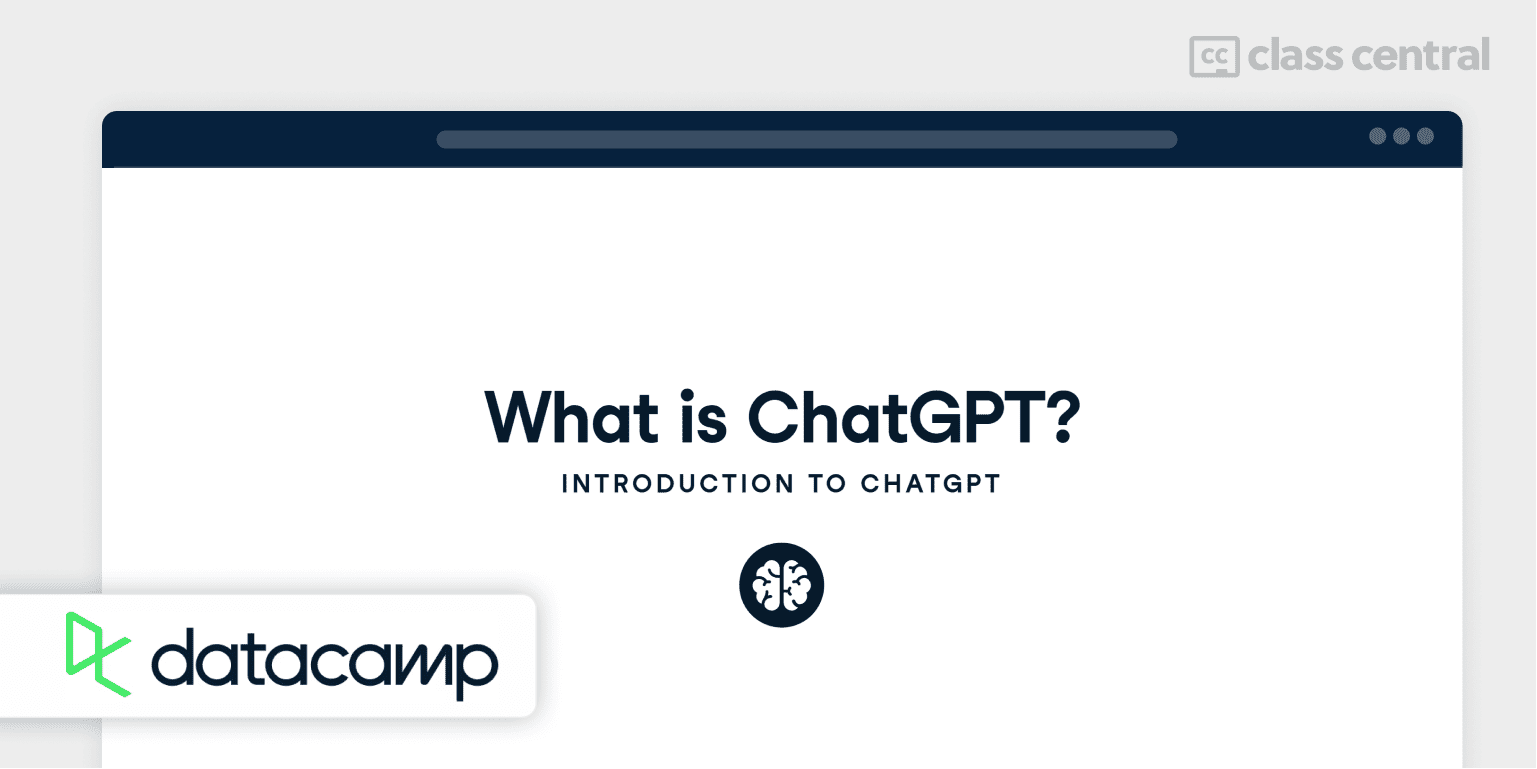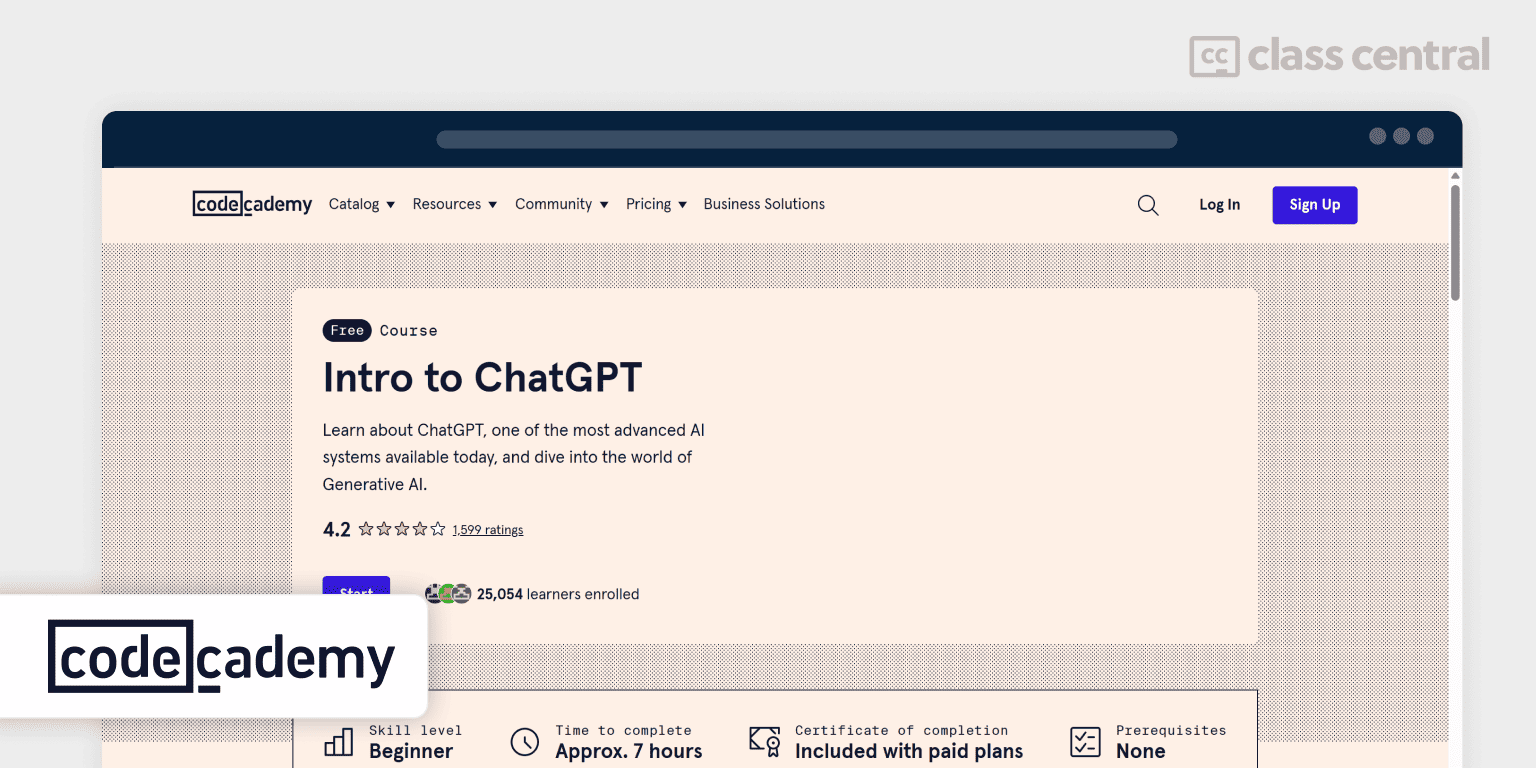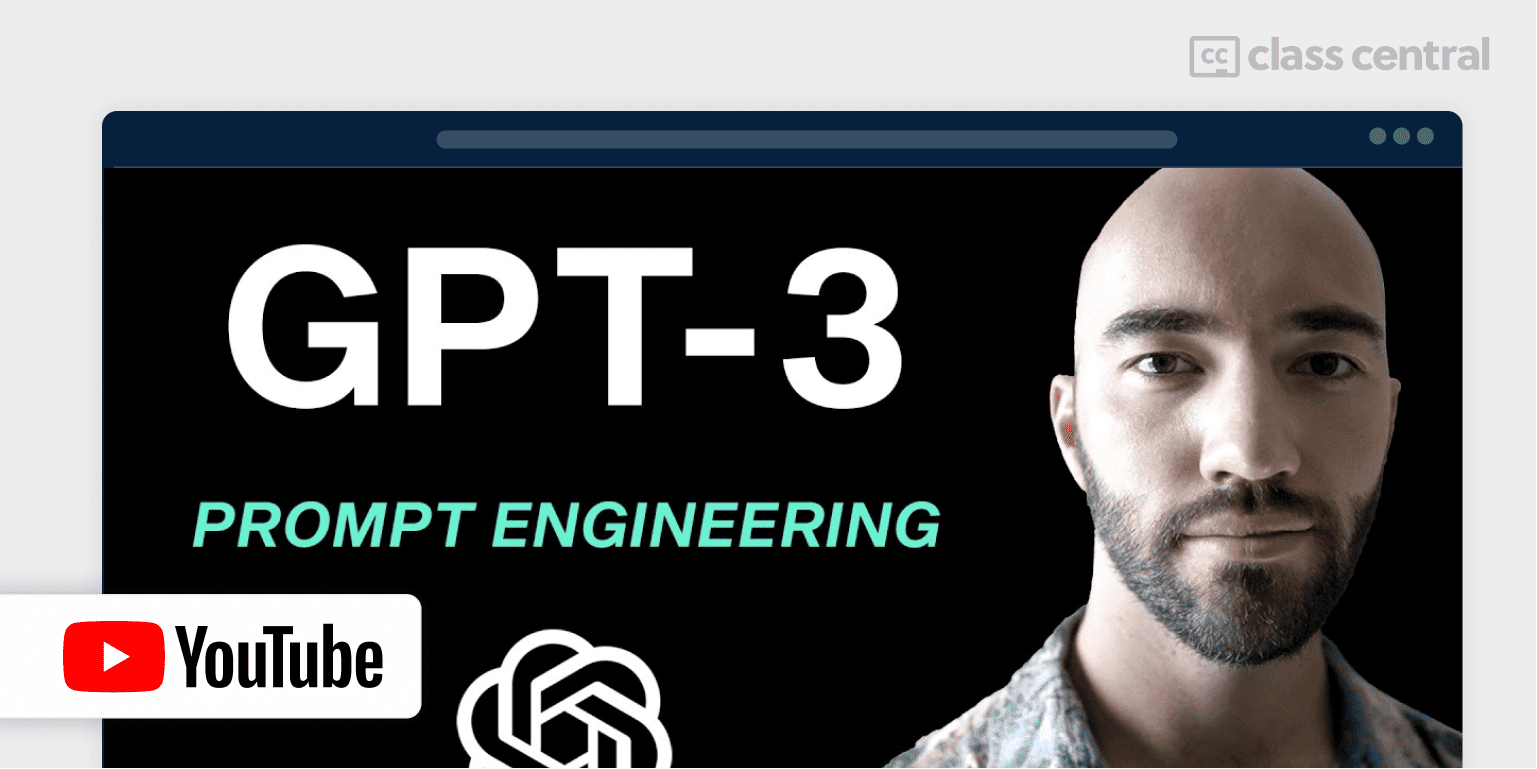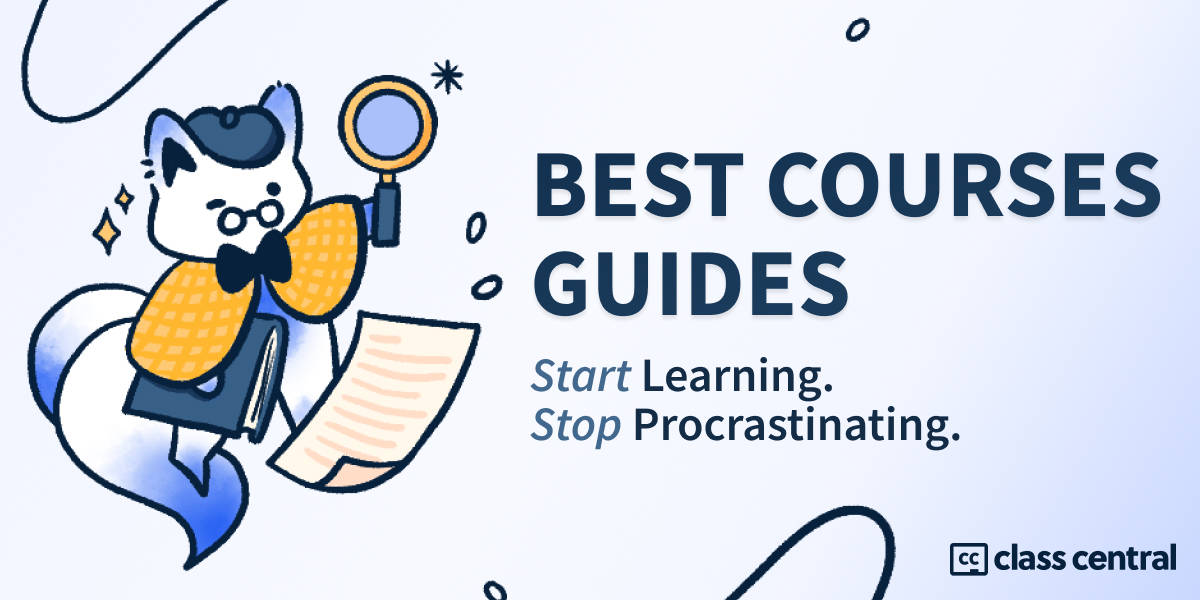11 Best ChatGPT & Prompt Engineering Courses for 2025
Unlock the full potential of ChatGPT and prompt engineering with these top-rated courses.
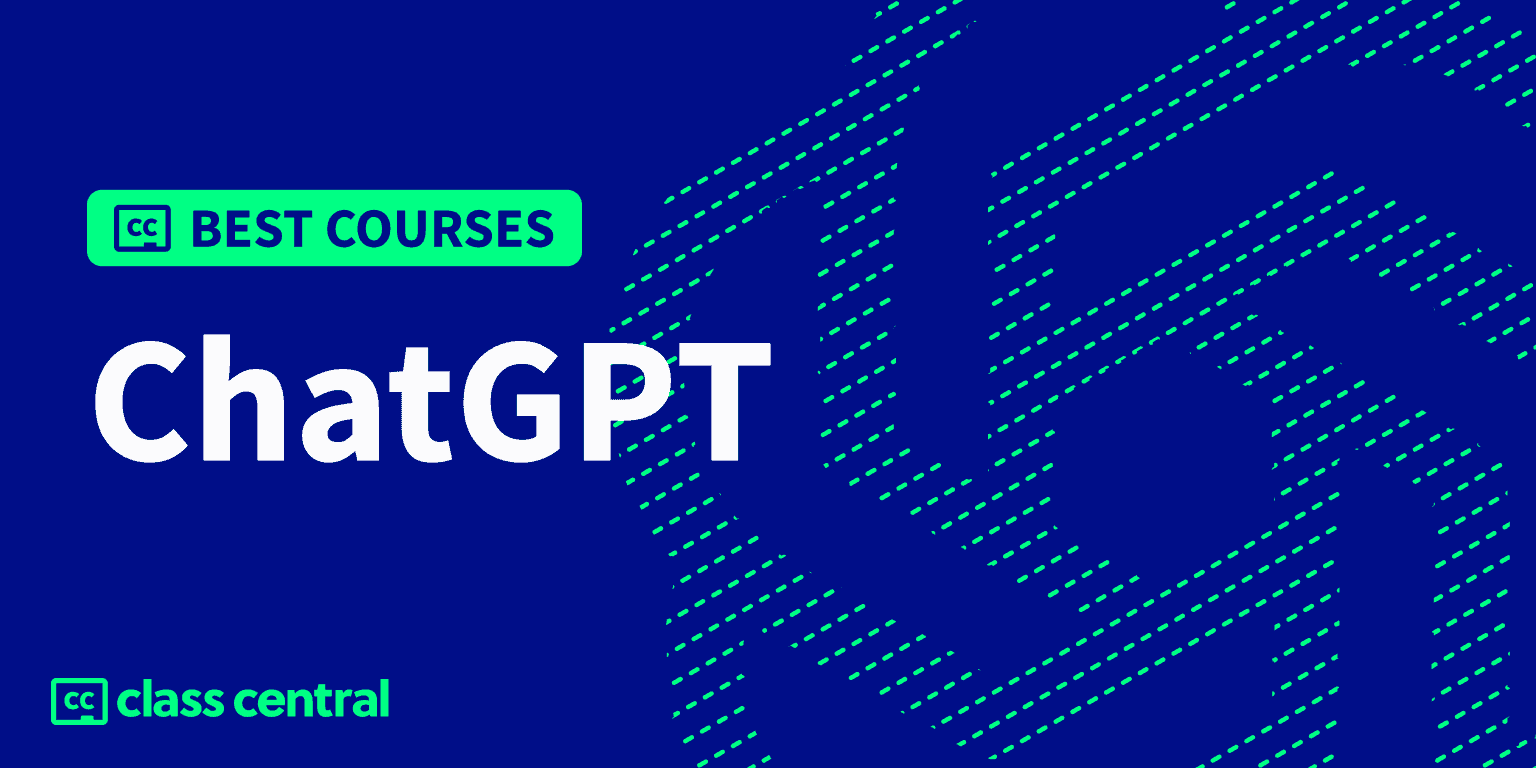
So unless you’ve been living in the woods for the past 2 years, you’ve probably heard of ChatGPT: an advanced language model developed by OpenAI that generates human-like responses to any given prompt. Heck, it would be weird if you hadn’t heard of ChatGPT, as its release in November 2022 drummed up quite the sensation online, taking the Internet by storm.
But enough of my pandering. ChatGPT has improved considerably since it was first launched, with the latest model GPT-4o having shown sparks of human-level intelligence, and it will continue to improve. It is thus evident that AI is starting to fundamentally change the way we live and work for the foreseeable future. But just as the invention of the calculator gave mathematicians and non-mathematicians the power to crunch a tortuous amount of numbers, such power is for naught if they haven’t the slightest bit of arithmetic at all.
So how do you use this tool with mastery but also care? In this Best Courses Guide, I, Elham, will guide you through the wealth of courses — free and paid — to help you pick the best course for you. Have you just discovered ChatGPT and are just discovering the changes you can make in your workflow? Or do you already use ChatGPT on the daily, but want to craft your prompts such that it’ll give you the perfect response you need 90% of the time? This guide is for you.
Click on the shortcuts for more details:
- Top Picks
- What is ChatGPT (and Prompt Engineering)?
- Why You Should Trust Us
- Courses Overview
- How We Made Our Picks and Tested Them
Here are our top picks
Click to skip to the course details:
What is ChatGPT (and Prompt Engineering)?
Instead of telling you what ChatGPT is, let me instead ask ChatGPT to describe itself (as it is obligatory to do so in every video or article discussing ChatGPT).

And there you have it! ChatGPT, as it describes itself, is a conversational AI chatbot. Though text-generating AI models have been around for literally decades, the reason why ChatGPT has triumphed over the rest is due to its ease of use. Just as you would with texting a friend, you can type in a question or statement (called prompts) to ChatGPT, and it’ll respond to the best of its abilities.
Writing prompts is the only way for you to communicate your intent with ChatGPT (as of June 2024 that is). It is no surprise then that the quality of your prompts greatly affects the ChatGPT’s responses. So how do you write prompts well and get the perfect response from ChatGPT? Through prompt engineering!
Prompt engineering is all about crafting and optimizing prompts to efficiently use language models for a variety of applications. It is not limited to text-generating models like ChatGPT — image-generating models like Midjourney and Stable Diffusion also require high quality prompts to achieve a high quality result. Prompt engineering is useful for reducing the need to regenerate text for the same prompt since the first response didn’t satisfy you thus saving time and money, and it is also used to improve the reliability and logical reasoning of large language models.
Why You Should Trust Us
Class Central, a Tripadvisor for online education, has helped 60 million learners find their next course. We’ve been combing through online education for more than a decade to aggregate a catalog of 200,000 online courses and 200,000 reviews written by our users. And we’re online learners ourselves: combined, the Class Central team has completed over 400 online courses, including online degrees.
Courses Overview
- Five of the courses are suitable for complete beginners to ChatGPT, whereas the prompt engineering courses require some prior knowledge of ChatGPT or other large language models (LLM)
- All of the courses are free or free-to-audit, except for two
- Most of the courses are article-based.
All You Need to Know About Prompting (learnprompting.org)
If you want to learn how to use AI and craft the perfect prompt for ChatGPT and other AI models such as Claude, this comprehensive course is for you.
learnprompting.org is a free, open-source guide to prompt engineering for beginners and experts. It covers a wide range of topics from the basics of prompt engineering to more advanced prompting techniques and tools such as calibration and prompt tuning. It also has interactive examples for you to explore. You can choose the chapters that interest you the most and even join their Discord channel for additional support.
This course has been translated into thirteen other languages including Español, Français, 日本語, Português, 简体中文, 한국어, සිංහල, and Русский.
| Website | learnprompting.org |
| Creator | Sander Schulhoff |
| Level | Beginner |
| Forks | 632 |
| Stars | 4.2K |
| Certificate | None |
Prompt Engineering Course with Certificate (Google)
If you’re a complete beginner to AI prompting, you’ll find Google Prompting Essentials easy to follow, engaging and helpful. And when you pass the five graded quizzes, you’ll earn a Prompting Essentials career certificate to add to your resumé, performance review, LinkedIn, and social media.
If you have limited experience with AI prompting, you’ll find plenty of useful content and practical tips. Even if you work daily with AI prompting, you might learn some advanced techniques and applications including prompt chaining, meta-prompting, analyzing complex tasks, images, audio and video files, or data sets. Did you know you can use AI to compose images? Or create a personalized AI agent to role-play conversations or help you prepare for an interview? Most of these aspects have guided activities to help you cement your new-found knowledge. The course is packed with examples of situations where you can use AI, which in turn stimulate ideas for more uses.
See Pat’s in-depth review of this course for more details.
| Institution | |
| Provider | Coursera |
| Instructor | Google Career Certificates |
| Level | Beginner/Intermediate |
| Workload | 9-10 hours |
| Enrollments | 9.9K |
| Rating | 4.7 / 5.0 (104) |
| Certificate | Paid |
Best Generative AI with ChatGPT course with Live Sessions (Noble Desktop)
If you prefer instructor-led learning, Noble Desktop’s Generative AI with ChatGPT offers real-time feedback and accountability that pre-recorded courses can’t match.
What I find interesting is that this program runs both in-person (NYC campus) and online (Zoom). Even if you’re attending online, you’ll have individual attention and can see other students in the classroom. You’ll be able to interact with instructors, receive feedback, and ask questions during sessions. Plus, you’ll get access to class recordings and workbooks – pretty helpful for catching up if you miss a class or reviewing what you learned.
Key Benefits
- Small class sizes (8-15 students)
- Certificate of completion to showcase achievements
- Free retake within one year
- Detailed class files with real-world projects
- Can also upgrade to the “MBA” Business Certificate or AI for Business with ChatGPT & Copilot course.
Noble Desktop knows what they’re doing – they’ve been around for over three decades providing instruction with industry experts. So you can rest assured your mentorship will not be with someone who just finished the course. Don’t take my word for it – student reviews on Yelp and Google praise their practical approach and instructor quality.
What You’ll Learn
- Fundamentals of generative AI, including ChatGPT’s capabilities and applications
- Craft prompts, follow up on responses, and refine ChatGPT outputs for your needs
- Explore ChatGPT’s plans and learn to maintain data security while using the platform
- Advanced features like prompt frameworks and DALL·E image generation
- Prepare for AI’s role in the workplace by evaluating results in a collaborative AI environment.
Flexible Schedule Options
- 1 day full-time (weekdays).
“I learned a great deal, and my questions about the best way to query ChatGPT, the different versions, and costs were all clarified. This was a great class that was very valuable to me in my work. I would highly recommend it to others.” – Linda F., Noble Desktop learner.
| Provider | Noble Desktop |
| Instructors | Dan Rodney, Garfield Stinvil, Mourad Kattan |
| Level | Beginner |
| Workload | 6 hours |
| Rating | 4.8/5.0 (Yelp) and 5.0/5.0 (Google) |
| Certificate | Paid |
A Comprehensive Prompt Engineering Guide (DAIR.AI)
A much more structured course than the previous pick, DAIR.AI’s Prompt Engineering Guide will guide you through the art of creating effective prompts for large language models. While the examples are tested with OpenAI’s text-davinci-003 model, the principles taught in this course can be applied to ChatGPT and other models.
In this course, you’ll start by learning the basics of prompts and how to interact with them. Then, you’ll learn advanced prompt engineering techniques, understanding their advantages and disadvantages. Equipped with this knowledge, you’ll be able to improve the logical and arithmetical reasoning of any LLM!
By the end of this free course, you’ll be able to write prompts to help you achieve more complex and interesting tasks, as well as have a general understanding of the LLM landscape — from applications of LLM, such as generating sample data for training or code for a programming language, to their potential for misuse.
This bulk of this course is made up of 5 chapters. You’ll learn by reading through the course chapters one-by-one and trying them out on your own.
| Organization | DAIR.AI |
| Website | promptingguide.ai |
| Level | Beginner |
| Workload | N/A |
| Forks | 4.4K |
| Stars | 45.6K |
| Certificate | None |
Hands-On Prompt Engineering — Beginner and Advanced Techniques (DAIR.AI)
This concise video lecture on Prompt Engineering from DAIR.AI (with Jupyter notebook code demonstrations included!) is a safe bet for anyone wanting to learn the art of Prompt Engineering. Yes, it’s basically a video version of their text-based course.
Presented by Elvis Saravia, this lecture covers the basics of prompt engineering and all the latest prompt engineering techniques: Few-Shot, Chain-of-Thought, Self-Consistency, Knowledge Generation, and ReAct. Additionally, you’ll discover tools and applications like LangChain to be used with LLMs and explore future directions for LLMs.
The prerequisites for the lecture are basic knowledge of Python, language models, deep learning, and ML concepts. You can find the lecture slides here and the notebooks here.
| Institution | DAIR.AI |
| Provider | YouTube |
| Instructor | Elvis Saravia |
| Level | Beginner |
| Workload | 1 hour |
| Views | 184K |
| Rating | 4K thumbs up |
| Certificate | None |
Build Your Own GPT Chatbot (Andrew Ng)
Most prompt engineering materials out there on the Internet just focus on using ChatGPT web user interface, but there’s actually a lot more you can do — especially if you’re developer. By leveraging the power of prompt engineering and OpenAI’s API, you can build software applications and even your own custom chatbot.
ChatGPT Prompt Engineering for Developers, free for a limited time, will give you hands-on experience crafting prompts to control GPT-3.5 turbo outputs or any other large language model (LLM). With the guidance of Andrew Ng, the founder of DeepLearning.AI, and Isa Fulford from OpenAI, you’ll follow the best prompt engineering practices to use OpenAI’s API for tasks such as summarizing, inferring, transforming, and expanding texts from the comfort of a Jupyter notebook. And all of this requires no setup whatsoever — all you need is an internet browser and an OpenAI account.
This course is suitable for both beginner developers and advanced machine learning engineers. The only prerequisite required is a basic understanding of Python. However, as Manoel pointed out in his in-depth review, if you are not a developer, you can pretty much ignore the programming aspects of the course and focus on the principles.
| Provider | DeepLearning.AI |
| Instructors | Andrew Ng and Isa Fulford |
| Level | Beginner |
| Workload | 1–2 hours |
| Certificate | None |
Introduction to ChatGPT (DataCamp)
If you’re curious about what ChatGPT can do, this short paid course will help you understand how it works as well as discover its potential (and limitations)! With DataCamp’s Introduction to ChatGPT, you’ll learn how to write effective prompts that allow ChatGPT to provide insightful and accurate responses. You’ll also gain a deeper understanding of when and how to adopt ChatGPT into your workflow, all while keeping a keen eye on the legal and ethical implications of AI.
This course is 1 hour long, with 8 videos and 26 exercises in total. You’ll learn by watching the well-presented lecture videos, answering the MCQ quizzes, and completing the interactive coding exercises in DataCamp’s browser-based programming environment.
If you have a valid university email and have signed up for the GitHub student pack, you can get a 3 months free trial from DataCamp.
| Provider | DataCamp |
| Instructor | James Chapman |
| Level | Beginner |
| Workload | 1 hour |
| Enrollments | 204K |
| Certificate | Paid |
ChatGPT Crash Course for Beginners (Adrian Twarog)
If you want to jump right into using ChatGPT and improve your productivity, then take this less-than-an-hour crash course.
This ChatGPT Tutorial covers creating an account, interacting with ChatGPT, and using it for various tasks, including writing, summarizing, and generating ideas. No prior knowledge of ChatGPT is required, making it accessible for beginners. The course is presented in a video format and provides practical demonstrations.
You’ll learn some basic and advanced prompts to use with ChatGPT for all sorts of applications, including:
- Creating short stories, jokes, and even cover letters and resumes
- Summarizing lengthy documents and pulling out important information
- Generate ideas for a topic title for a blog post
- Providing an outline for an article
- Rephrasing, lengthening, shortening, and fixing the grammar of sentences
- Translating a sentence from English to German and back to English, along with other requests such as adding humor
- Writing a subject line for an email newsletter based on a blog post.
| Channel | Adrian Twarog |
| Provider | YouTube |
| Instructor | Adrian Twarog |
| Level | Beginner |
| Workload | Less than 1 hour |
| Views | 5.6M / 83K thumbs up |
| Rating | 4.5 / 5.0 (35) |
| Certificate | None |
Leverage AI for Education (Galileo University)
The rise of AI models, such as ChatGPT, is reshaping the educational landscape. How do you, as an educator, adapt to the new landscape and embrace ChatGPT as a means of teaching and learning better?
This free-to-audit Spanish course offered by Galileo University explores the integration of ChatGPT and other AI tools into education. It provides educators with a comprehensive understanding of ChatGPT and how to incorporate it into teaching practices. The course covers writing effective prompts, personalized lesson plans, student evaluation optimization, and ethical considerations. You’ll learn through lectures, readings, and quizzes.
| Institution | Galileo University |
| Provider | edX |
| Instructor | Miguel Morales |
| Level | Beginner |
| Workload | 16–20 hours |
| Enrollments | 11K students |
| Rating | 4.7 / 5.0 (338) |
| Certificate | Paid |
Learn How to Use ChatGPT Efficiently (Codecademy)
Codecademy’s Intro to ChatGPT is a free course designed for beginners who want to understand and utilize ChatGPT effectively — from the simplest daily tasks to more complex business projects. You’ll learn the fundamentals of ChatGPT, including its underlying principles, how to write effective prompts, and responsible usage. The course consists of lessons, quizzes, and portfolio projects, offering a hands-on learning experience. A certificate of completion is available for Codecademy subscribers.
| Provider | Codecademy |
| Level | Beginner |
| Workload | 7 hours |
| Enrollments | 79K learners |
| Rating | 4.3 (2.9K ratings) |
| Certificate | Paid |
Finetune OpenAI’s GPT-3 and Other LLMs With James Briggs
Prompt Engineering with OpenAI’s GPT-3 and Other LLMs is a simple but useful starting place to learn what Prompt Engineering is all about.
In this video lecture, James Briggs will guide you through the process of crafting better prompts for GPT-3 and other LLMs in a systematic yet artistic manner, utilizing rules of thumb from a range of AI creators.
In this video lecture, James Briggs provides a systematic approach to prompt engineering for GPT-3 and other large language models. You’ll learn the essentials of prompt engineering, including the components of a prompt and techniques like few-shot training. The lecture is concise but insightful, offering practical tips and strategies to improve the output quality of language models.
You can find the link to the Colab notebook used in the course here.
| Channel | James Brigg |
| Provider | YouTube |
| Instructor | James Brigg |
| Level | Intermediate |
| Workload | 30 min |
| Views | 40K |
| Likes | 747 |
| Certificate | None |
How We Made Our Picks and Tested Them
I built this guide following the now tried-and-tested methodology used in previous Best Courses Guides (you can find them all here). It involves a three-step process:
- Research: I started by leveraging Class Central’s database. Then, I made a preliminary selection of 500+ ChatGPT courses by rating, reviews, and bookmarks.
- Evaluate: I read through reviews on Class Central, Reddit, and course providers to understand what other learners thought about each course and combined it with my own experience as a learner.
- Select: Well-made courses were picked if they presented valuable and engaging content. They have to fit in a set of criteria including: comprehensive curriculum, affordability, release date, ratings and enrollments.
Fabio revised the research and the latest version of this article.

Elham Nazif



